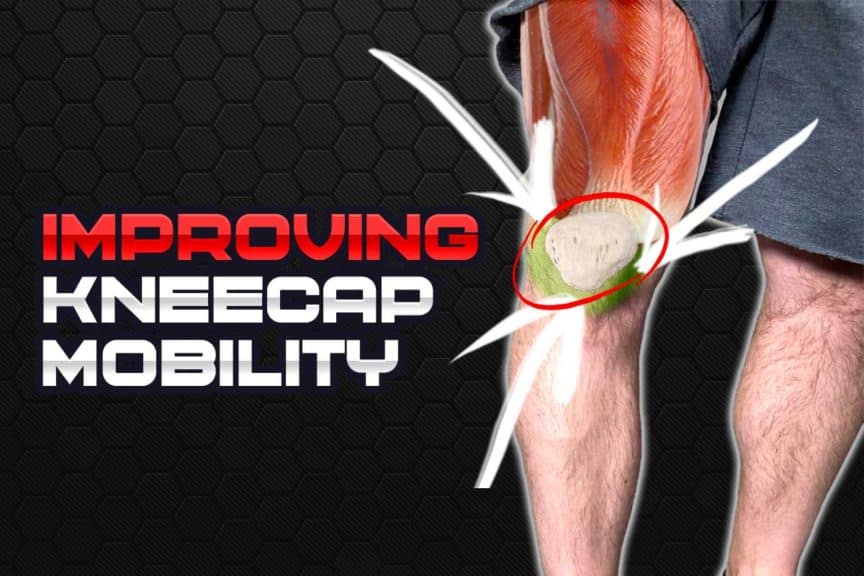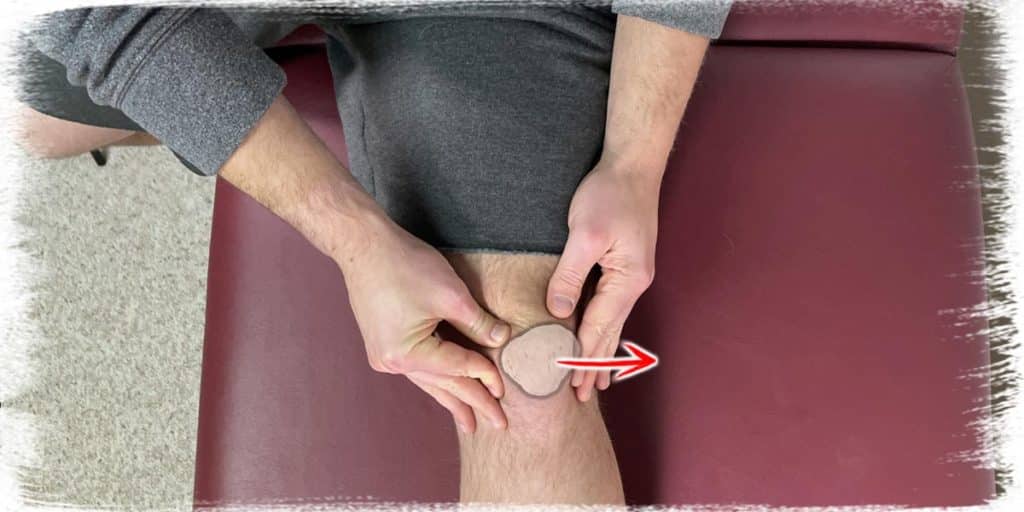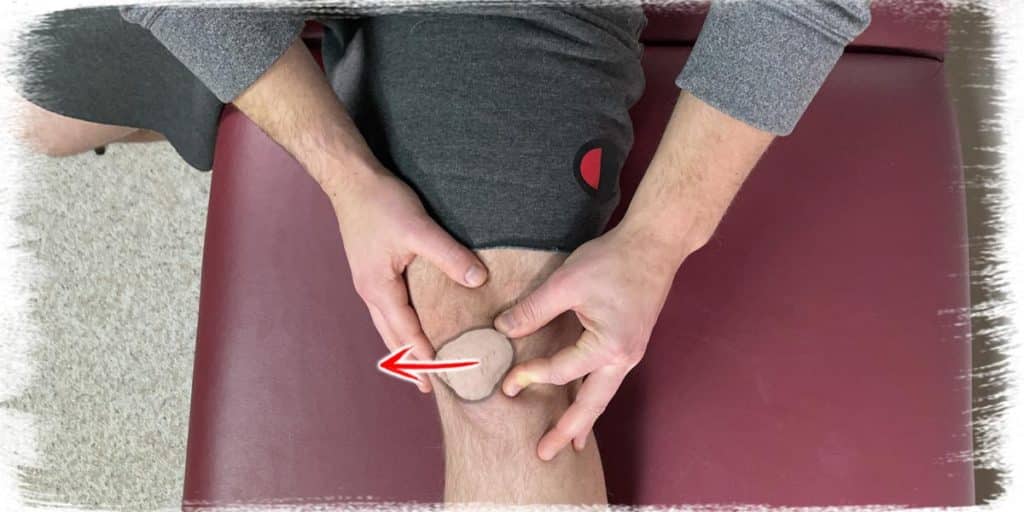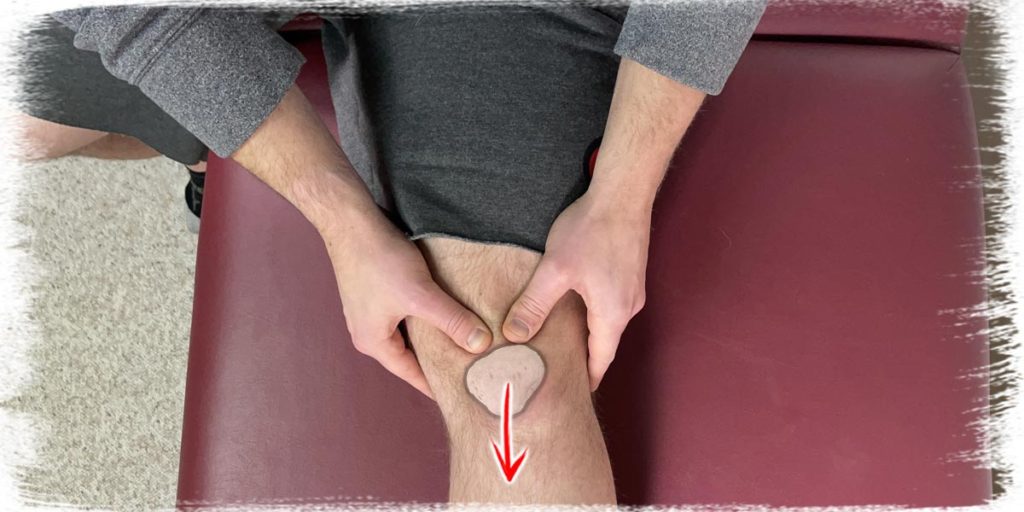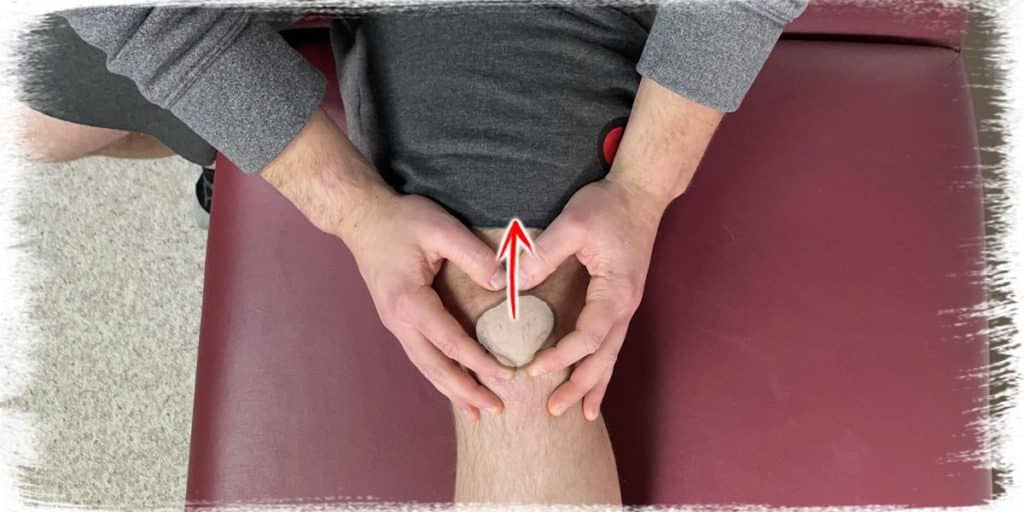If you’ve been having some stiffness or pain in your knee recently and you’ve noticed that your kneecap isn’t moving like it otherwise should be, it may not be a coincidence. A kneecap (anatomically referred to as the patella) that doesn’t move as freely as it should can wreak havoc on the entire knee itself. Thankfully a stiff kneecap can often regain its mobility with the right interventions and some consistent work.
Techniques that are often helpful to Improve kneecap mobility include:
- Using heat to get the area moving
- Performing patellar glides in all directions
- Improving quadriceps tendon health
- Improving mobility of your IT band
Since improving kneecap mobility can help reduce knee pain and improve knee function, it’s a good idea to know what actions you can take to get things under control.
So, if you want to know the details on how you can get a stiff kneecap moving again, keep on reading!
ARTICLE OVERVIEW (Quick Links)
Click/tap any of the headlines below to instantly read that section!
• Checking your kneecap mobility
• Start with heat to prep the area
• Performing patellar glides
• Working your quadriceps tendon
• Don’t forget to target your IT band
Checking your kneecap mobility
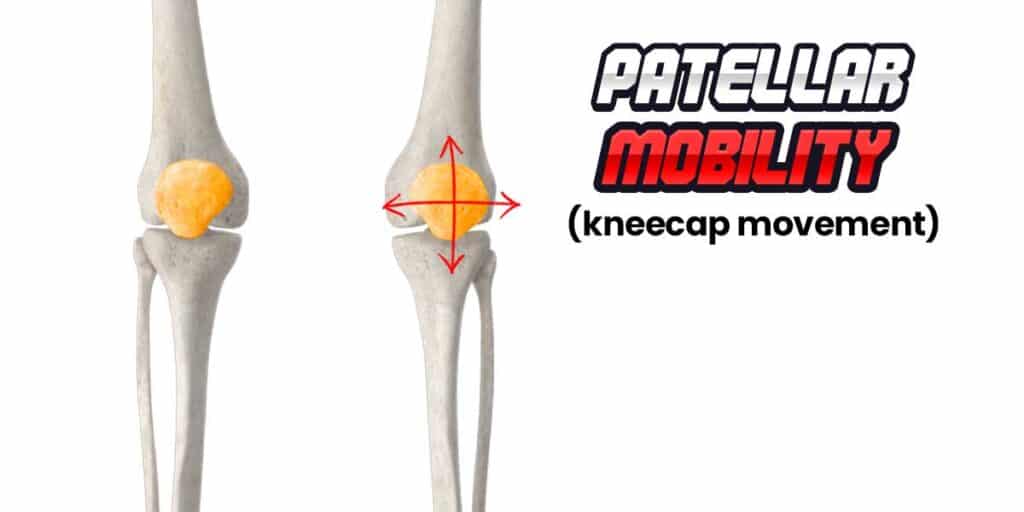
Each of your kneecaps should have a certain amount of “wiggly-ness” to it, meaning that it should be able to move up, down, left or right to a certain extent when pushed in any of those directions. If it doesn’t want to move at all, it might signify that some of the tissues that connect to the kneecap are tight or restricted in some capacity.
It’s always a good idea to compare the movement of one kneecap to the other, especially if you’re having pain in one knee and not the other. Kneecaps that are often hypomobile (don’t move enough) cause pain or discomfort within or around the knee.
Start with heat to prep the area
It’s not a bad idea to try getting some therapeutic heat on and around your knee if you feel that the kneecap region feels tight or stiff, provided it’s not stiff or sore from a brand new injury.
Heat helps tight tissues relax by improving blood flow to the area, decreasing the viscosity of fluids in and around the tissues, and enhancing the viscoelastic properties of other tissues.
If you want to perform some dedicated mobility work to the region (see below for how to do this), start off with heating the area for five to ten minutes with a heating pad or other similar device. Doing so can help you get better results thereafter.
But even if you don’t want to do any other specific interventions, you may find heat to still be incredibly helpful in getting your kneecap to move better.
Performing patellar glides
Patellar glides are exactly what they sound like — they’re the gliding movement that the kneecap undergoes when it’s pushed in a particular direction. Patellar glides can be a rather simple yet highly effective way to improve kneecap mobility if it’s being “held down” by specific tissues such as the medial or lateral patellar retinaculum.
To perform medial and lateral patellar glides
These patellar glides refer to pushing the kneecap sideways. Here’s how to go about doing so:
- Sit in a position that allows your knee to be fully straightened (glides don’t work if the knee is bent due to the tension that the knee tissues are under).
- Grab the inside (medial) and outside (lateral) edges of your kneecap
- Push the kneecap inwards (towards the midline of your body) and take note of how it feels to do so. If it feels difficult to move or is mildly uncomfortable (but not painful) and the end range, repeat this inwards pushing for 10-20 repetitions.
- Push the kneecap outwards (away from the midline of the body) and note how it feels to do so. As with step 3, if it feels tight or mildly uncomfortable, repeat this movement for 10-0 repetitions to help loosen the tissue connecting to the kneecap.
Pro tip: when you push the kneecap inwards, you can try to lift the outside edge of the patella up a bit as you do so, which is known as a patellar tilt. This edge won’t tilt up much but should to a very minor extent. Performing some patellar tilts while performing the medial glide can be a great way to further mobilize the lateral patellar retinaculum.
Performing superior and inferior patellar glides
These patellar glides refer to pushing your kneecap upwards and downwards. Here’s how to perform them:
- Sit with your leg straight so that you’ll be able to wiggle the kneecap (you can’t do so if the knee is bent).
- Grab the inside and outside edges of the kneecap.
- Gently pull the kneecap upwards. If it feels mildly difficult to do so, or if there’s a mild discomfort when performing the movement, consider repeating this upwards glide for 10-20 repetitions.
- Push the kneecap downwards. As with step 3, if it feels stiff or mildly uncomfortable, consider performing another 10-20 repetitions.
Working your quadriceps tendon
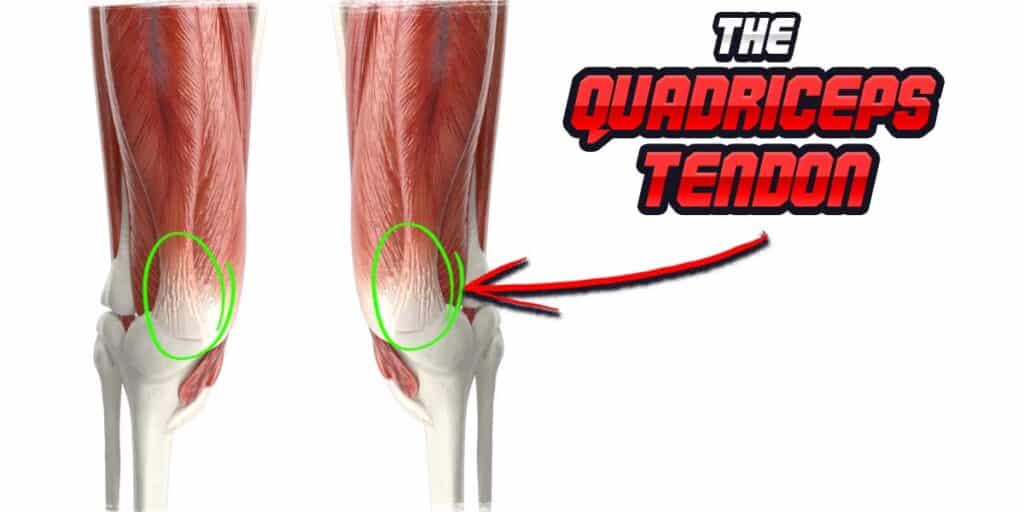
In addition to performing direct work to the patella by using glides, you may also experience highly effective results by working on the mobility of your common quadriceps tendon. This is the tissue that takes all four of your quadriceps muscles (muscles on the front of the thigh) and anchors down onto the top of the kneecap.
As a result, if your quadriceps tendon is rather restricted in any sort of capacity, it can negatively influence how your kneecap moves. It can also lead to other conditions, such as patellofemoral pain syndrome.
How to improve your quadriceps tendon mobility
There are a number of different ways that this can be performed, but the simplest and perhaps most effective ways (that you can do at home) are to:
- Perform movements that force the tendon to lengthen out
- Enhance the mobility of the quadriceps muscles themselves
Movements that lengthen out the quadriceps tendon
Lengthening the quadriceps tendon is best done by performing movements involving bending the knee (known as knee flexion). The more you flex the knee, the greater accommodation (lengthening) the quadriceps tendon must undergo.
If your knees are really stiff, performing knee-bending movements, such as when laying on your back, can be a great start to get the knee region and front of the thigh to lengthen out.
If you need a bit more of a challenge, my favourite movement is to perform the reverse Nordic curl. This is a movement I give to many of my patients in the clinic (when appropriate). It produces some great results in terms of pain reduction and improved kneecap mobility.
To learn more about this movement, check out my articles:
• Reverse Nordics and Knee Health: What You Must Understand
• Six Practical Benefits of Reverse Nordic Curls (Are You Missing Out?)
Enhancing the mobility of the quadriceps muscles
Again, there are many great ways to do this (including what’s mentioned in the above section). However, you might not need to always lengthen out the tissues to improve their mobility.
Enter soft-tissue techniques such as:
- Foam rolling
- Instrument-assisted soft tissue mobilization (IASTM)
- Compression flossing (Voodoo flossing)
These are all techniques that can be performed at home and are relatively straightforward to do. They all have evidence behind their use when it comes to helping to make favorable changes to tissue quality, so they’re definitely worth considering.1-7 I have a lot of information written on these topics, so to learn more, be sure to check out any of the following articles:
Related articles:
• Knees Over Toes Mobility: Unlock Your Mobility With These Techniques
• Rumble Roller Vs Foam Roller: How to Choose Which One to Use
• IASTM: Here’s How it Works to Decrease Pain and Improve Mobility
Don’t forget to target your IT band
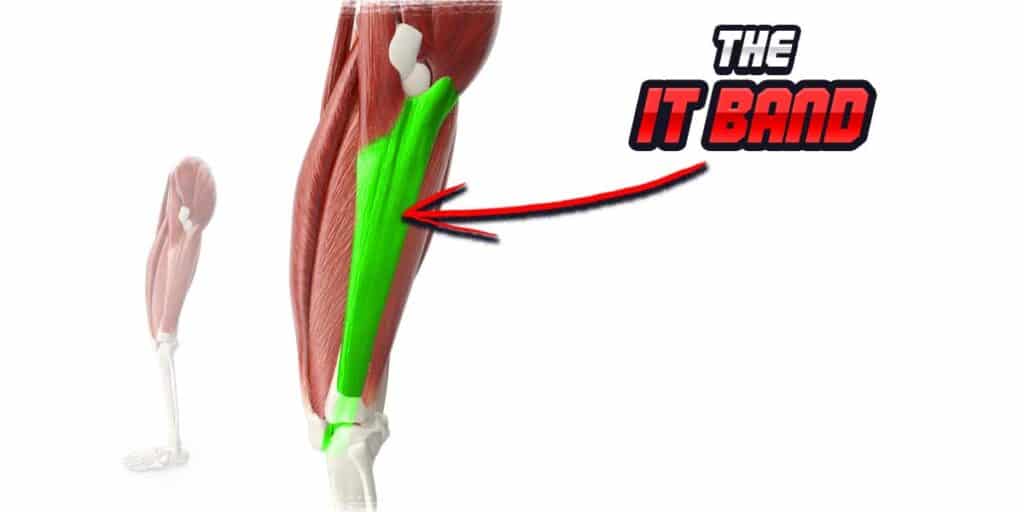
In your pursuit of improving your kneecap mobility, it’s also a good idea to target your IT band. This thick, gristly piece of tissue is the band that runs down the side of your leg. It serves as an attachment point for other muscles of the leg, and it crosses the outside edge of the knee, where it attaches to the top of the shinbone (tibia).
Its attachment point by the knee interfaces with the lateral patellar retinaculum, which means that any lack of tissue extensibility of the lower portion of the IT band could restrict movement of the kneecap, specifically with the patella gliding inwards (medially).
So, hop on a foam roller, use voodoo flossing, IASTM or any other form of self-soft-tissue mobilization to loosen up your IT band.
Pro Tip: When it comes to rolling your IT band (or your quadriceps), my personal favourite way to do so is to use the sleeve of a barbell. It’s like foam rolling on steroids, and so long as you’re able to put up with the discomfort, it is a great way to manipulate restricted tissue and to get it moving better. Check out the video below for how to do so!
Final thoughts
If your kneecap doesn’t have the ability to move around in ways that it otherwise should, you may be prone to experience various forms of knee pain and even reduced functional movement from the knee joint itself.
Be sure to make sure that the self-treatment methods described in this article are appropriate for you. If they are, stick with them (doing them at least once per day) for a few weeks in a row. After a few weeks, you’ll likely see an improvement in how your kneecap moves and how your knee feels overall!
References:
6. Stevenson PJ, Stevenson RK, Duarte KW. Acute effects of the voodoo flossing band on ankle range of motion. J Med Biomed Appl Sci. 2019;7(6):244-253.

Hi! I’m Jim Wittstrom, PT, DPT, CSCS, Pn1.
I am a physical therapist who is passionate about all things pertaining to strength & conditioning, human movement, injury prevention and rehabilitation. I created StrengthResurgence.com in order to help others become stronger and healthier. I also love helping aspiring students and therapists fulfill their dreams of becoming successful in school and within their clinical PT practice. Thanks for checking out my site!

